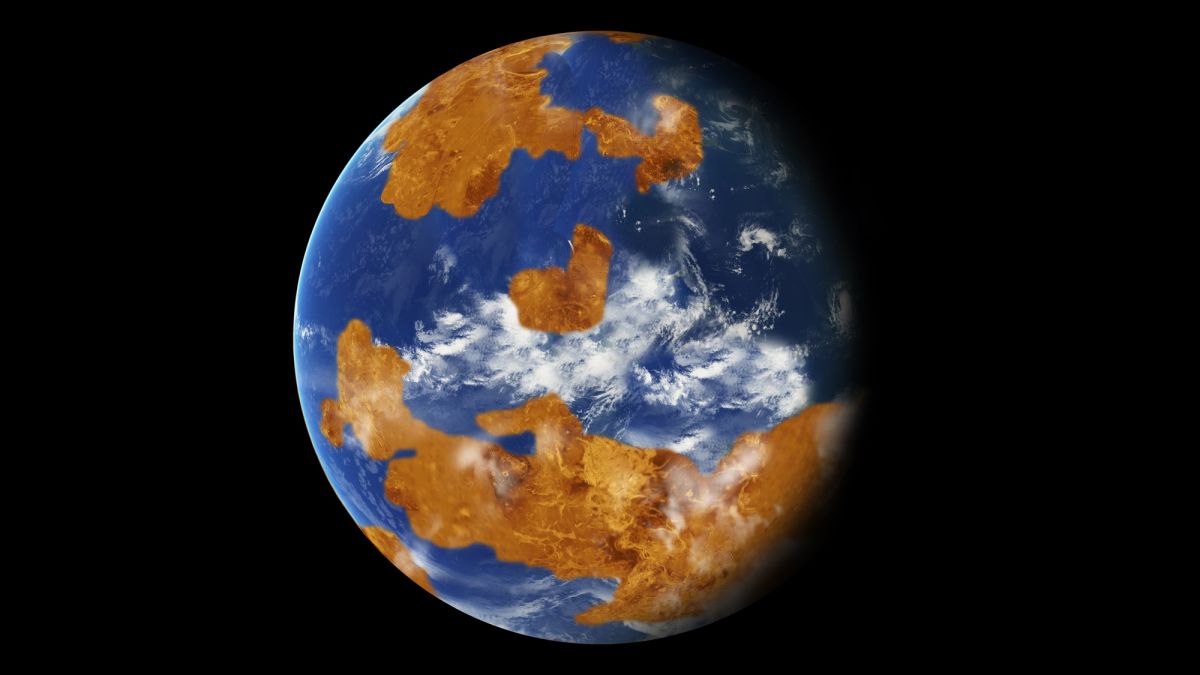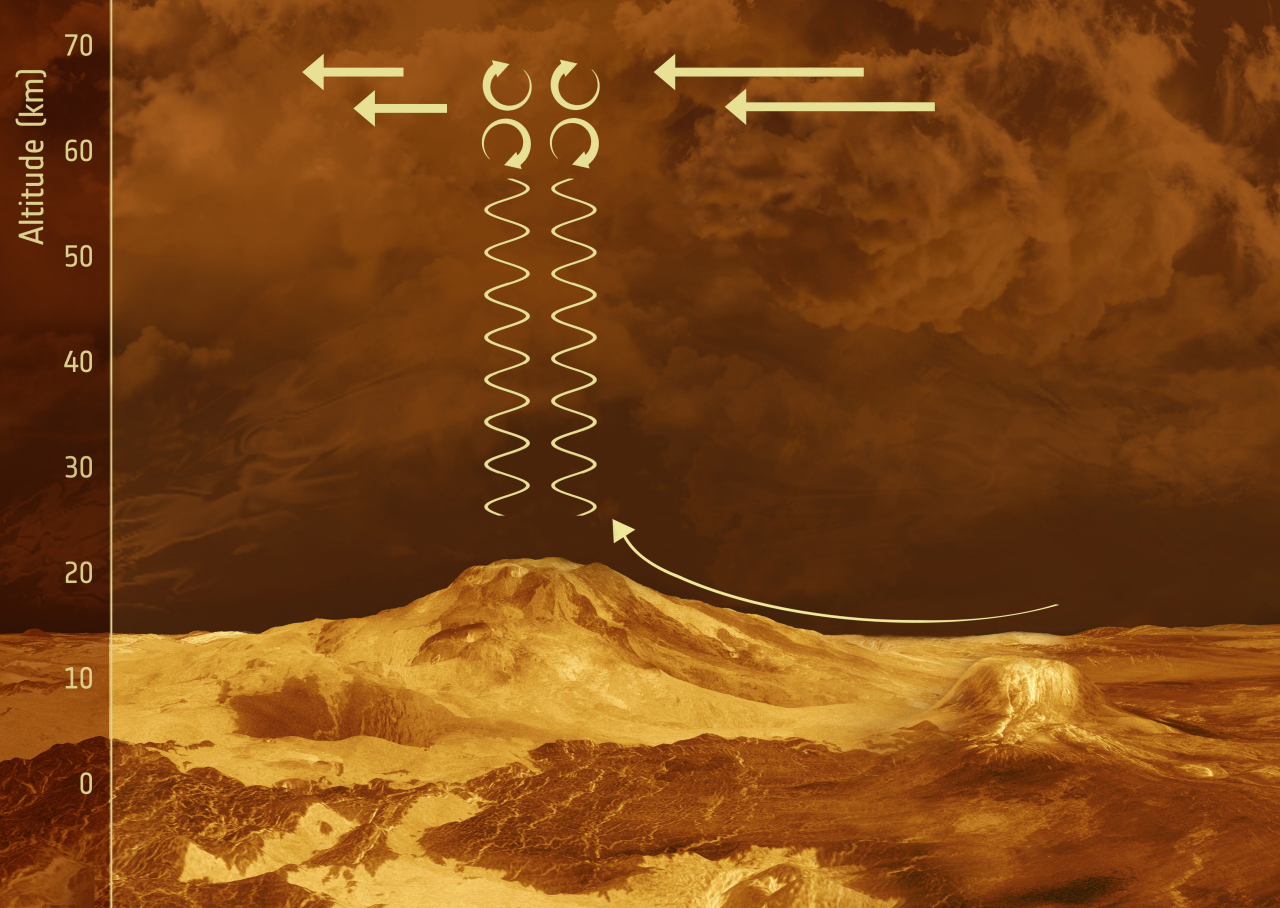The Surface of Venus Is Best Observed Using
Imaged the surface of Venus using ultraviolet radiation. Move about 50 kilometers above the surface of Venus however and its a different story.

This Is An Actual Picture Taken On The Surface Of Venus R Interestingasfuck
Imaged the surface of Venus using radar e.
. The images above are computer generated views of the surface of Venus using information from radar maps of the surface. Venus surface features observed at 1010 nm - posted in Major Minor Planetary Imaging. The mapping of Venus refers to the process and results of human description of the geological features of the planet Venus.
A radar rendition of the surface of Venus. The best observing is when Venus appears as a thin crescent and we see more of its nightside see The Phases of Venus below. Large optical telescopes C.
A trio of papers provide new insight into the composition and evolution of the surface of Venus hidden beneath its caustic high temperature atmosphere. The surface of Venus is best observed using A. Hot windy and dusty.
Which of the following statements about the atmosphere of Venus and its contents is NOT true. The results from the Magellan spacecraft. Normally the surface of Venus is completely hidden by thick clouds of sulphuric acid.
The atmosphere of Venus is too thick for us to see its surface however radar can pass through the thick atmosphere of Venus. High elevations typically appear very bright in radar images of Venus. Hello attached there is a series of images of Venus taken with the 24 Newton telescope at Johann Kern Observatory Wertheim Germany.
Imaged the surface of Venus using infrared radiation. Utilizing imaging from orbit using. The slow rotation of Venus causes the tracks to sweep gradually across the surface and the viewing.
C large optical telescopes. A red or dark blue colored filter can help reveal the. If the planet is particularly bright a moon filter usually helps greatly.
Chanover will observe at 2295 nm wavelength using an infrared camera cooled with liquid nitrogen. As in McKenzie and Nimmo 1997 two-dimensional grid-ded boxes of the observed and calculated LOS accelerations were used in this work. The article Venus nightside surface temperature shows a global map of Venus using Akatsuki infrared measurements.
The solution turned out to be unexpectedly simple. During a 42-minute scan the spacecraft gathered significant data on the atmosphere and surface before continuing to heliocentric orbit. Satellite radar provides imagery of the surface morphology by using the physical properties of.
Models for Venus show that the observed partial pressures of CO2 H2O HCl and HF are in chemical equilibrium at a pressure and temperature very close to that observed at the surface of Venus Fegley 2004. Fig1 in that article shows a blue region at 60⁰ N. LOS acceleration from Venus to decay rapidly as the frequency increases ie as the wavelength decreases.
The Highest Place on Venus. Here the atmosphere is mostly carbon dioxide the Sun shines brightly the pressure is similar to Earth and the temperature a much more reasonable 75C altogether a much more benign and Earth-like environment. Which of the following characteristics describe the conditions that prevail on the surface of Venus.
The surface pressure is around 92 bar 1334 psi and. Mineralogy of the surface. They reveal a hot surface with an average temperature of about 698 K and on a global scale surface temperatures with a spatial variation of about 230 K.
Or e infrared telescopes. The Magellan spacecraft produced images of which of the following. The large dark circular feature is the impact crater Cleopatra.
In this paper we apply techniques used to model Venus atmosphere to models for several hypothetical. It is also in the night sky the shortest period of time thus making a daytime solar telescope attractive. Magellan saw a land of extreme volcanism.
The orbiter saw a relatively young surface one recently reshaped in. It involves surface radar images of Venus construction of geological maps and the identification of stratigraphic units volumes of rock with a similar age. 2 is a low lying.
The Maxwell Montes the bright area in this image rise steeply from the smooth plateau to the west to heights of almost 11 kilometers 7 miles. NASAs Magellan spacecraft which ended a five-year mission to Venus in 1994 mapped the broiling surface using radar. For most observers Venus is always close to the Sun and therefore can only be observed near the horizon where atmospheric distortion is the greatestThe observation of its surface is impossible.
Venus by contrast has multiple layers of cloud-decks spanning something like 20 kilometers in altitude such that 0 of the surface is visible at any time from space as opposed to more like 50. Venus became the first planet to be explored by a spacecraft when NASAs Mariner 2 successfully flew by the planet at a range of 21660 miles 34854 kilometers on Dec. D large radio telescopes.
All of these 22. The surface of Venus is best observed using a ultraviolet satellites b radar c large optical telescopes d large radio telescopes e infrared telescopes. The Venusian surface has been studied by measuring radar reflections and thermal radio emission over a wide spectral region of several centimeters to.
However there is practically no wind or temperature difference on Venus. When observing Venus through a telescope it is important to reduce glare as much as possible to get the best view. This may be caused by a thin surface.
The surface of Venus is best observed using a ultraviolet satellites. The surface of Venus is a thermostat only laterally and along the vertical with a relief span of up to 11 km there are changes in both pressure and temperature Florensky et al 1977. Latitude that according to Fig.

Venus Was Potentially Habitable Until A Mysterious Event Happened Cnn
What Are The Best Pictures Of The Surface Of Venus Quora

Cloud Study Reveals Venus Surface Space Earthsky

Life On Venus Astronomers See Phosphine Signal In Its Clouds The New York Times

The Surface Of Venus Supernova Condensate Planets And Moons Astronomy Pictures Planet Project
Nasa S Davinci Explores Ten Mysteries Of Venus

Life On Venus Astronomers See Phosphine Signal In Its Clouds The New York Times

Life On Venus Astronomers See Phosphine Signal In Its Clouds The New York Times

An Image From The Surface Of Titan Saturn Moon With Lakes Oceans The Only Image From The Surface Of An Object F Saturns Moons Space And Astronomy Astronomy

Venus Information And Facts National Geographic
The Secret Of Venus May Be Hidden In The Heat Eurekalert

View Of Earth And Moon From Saturn Earth Pinterest Earth

Venus Surface Composition Britannica
Aerospaceweb Org Ask Us Planet Colors

Pin By Teri Mckee On Cosmos Venus Planet Pictures Planets

Venus Surface Composition Britannica

Standing On Venus In 1975 The Planetary Society

Surface Features On Venus Exploring The Planets National Air And Space Museum

The Surface Of Venus Supernova Condensate Planets And Moons Astronomy Pictures Planet Project
Comments
Post a Comment